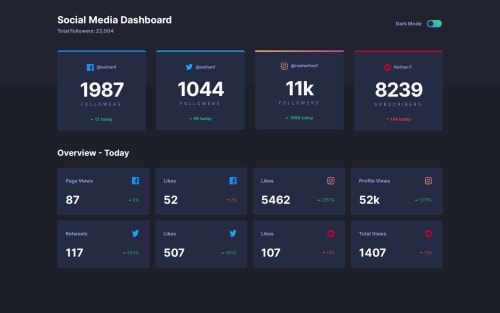Submitted over 1 year agoA solution to the Social media dashboard with theme switcher challenge
Social media dashboard using React & Tailwind
react, typescript, tailwind-css
@Francis7575

Solution retrospective
What are you most proud of, and what would you do differently next time?
During this challenge, I implemented Dark Mode using useContext and designed a responsive layout with CSS Grid to ensure the app is accessible across all devices.
What challenges did you encounter, and how did you overcome them?During this challenge, I implemented Dark Mode using useContext and designed a responsive layout with CSS Grid to ensure the app is accessible across all devices.
What specific areas of your project would you like help with?During this challenge, I implemented Dark Mode using useContext and designed a responsive layout with CSS Grid to ensure the app is accessible across all devices.
Code
Loading...
Please log in to post a comment
Log in with GitHubCommunity feedback
No feedback yet. Be the first to give feedback on Francis7575's solution.
Join our Discord community
Join thousands of Frontend Mentor community members taking the challenges, sharing resources, helping each other, and chatting about all things front-end!
Join our Discord